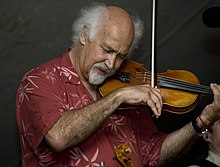| Cajun fiddle | |
|---|---|
| Stylistic origins | Ballads of the French-speaking Acadians of Canada |
| Cultural origins | Late 18th century Cajuns in Louisiana; German culture |
| Typical instruments | Cajun accordion, fiddle, steel guitar, guitar, triangle, harmonica, bass guitar, upright bass. In the 1930s string band era: mandolin, banjo. |
| Subgenres | |
| Black Creole | |
| Fusion genres | |
| Swamp pop, Zydeco | |

Cajun fiddle music is a part of the American fiddle music canon. It is derived from the music of southwest Louisiana and southeast Texas, as well as sharing repertoire from the Quebec and Cape Breton Island traditions. [1] It is one of the few extant North American folk music traditions rooted in French chanson. [2] According to Ron Yule, "Louisiana fiddling had its birth roots in Europe, with fiddling being noted as early as the 1400s in Scotland". [3] Zydeco music is a geographically, culturally, and musically related style.